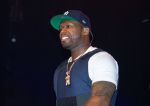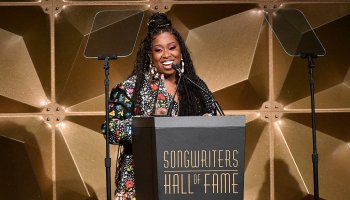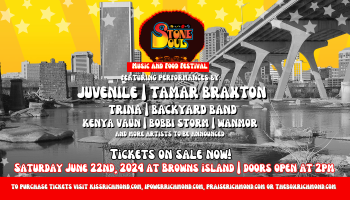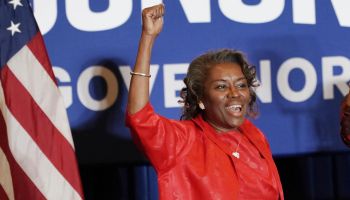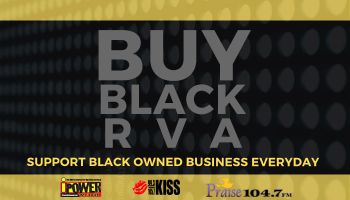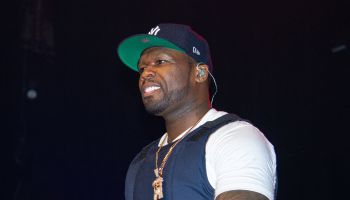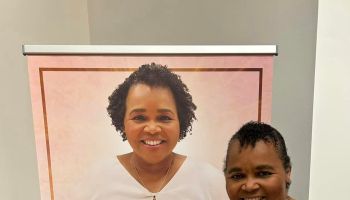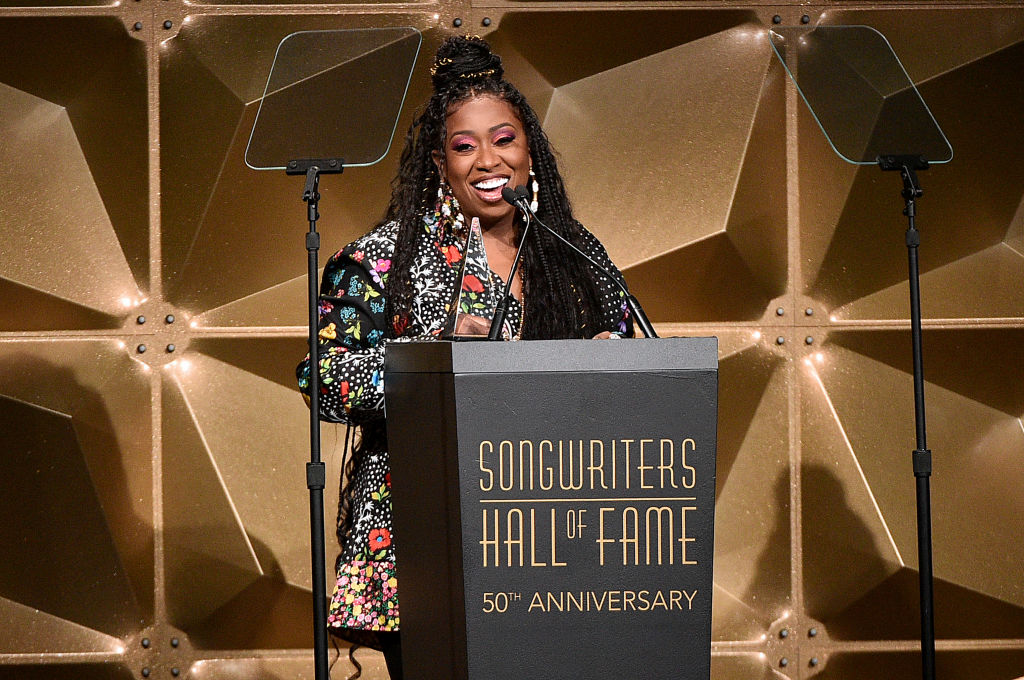
Source: Theo Wargo / Getty
This is a stan post for Missy “Misdemeanor” Elliott, our queen of hip-hop Afrofuturism! Her impact will forever be imprinted on our psyches but her name has resurfaced in the mainstream recently because her second studio album, Da Real World, celebrated its 20th anniversary in June. She also became the first female rapper inducted into the Songwriters Hall of Fame. She just dropped her first album in over a decade, Iconology, she will be honored at the MTV Video Music Awards with the Michael Jackson Video Vanguard Award and there’s a pop-up museum dedicated to her opening in New York this week. Missy is rightfully getting all her things, but I’d be remiss if I didn’t mention her impact on little Black girls who had the pleasure of growing up with her when she was on her rise to stardom.
Missy first came on my radar as the, “Hee hee haw lady,” in 1996. I heard the song for the first time at Skate Key, a popular teen skating club (I’m that old). It was the Bad Boy remix to Gina Thompson’s “Things You Do,” and I was struck by what I had come to realize was a version of scatting inserted into hip-hop. It made sense. Hip-hop was rife with interpolations and samples from jazz, so scatting belonged there too. Eventually, I saw the video and I was fascinated by this dark-skin plump woman who had a short cut with a swoop, she was wearing a blue and yellow tracksuit, and she foot-worked with ease. Her presence and confidence made her seem much taller than her 5’2” frame. From the moment I first heard those, “Hee hee hee hee haws,” I knew I had to perfect the entire song, including the scatting, by the next time I went back to the Key with my friends.
Missy’s debut album, Supa Dupa Fly, dropped in 1997. It was the Hype Williams music video era and their visual magic produced an intriguing amalgamation of quirky, Afrofuturistic imagery shown through fluorescent lighting, video distortion, and a fisheye lens for the debut single, The Rain. Missy danced around in a garbage bag suit, with a helmet attached to sunglasses and hoop earrings in one frame, and in a neon yellow and green suit in the next. I was hooked. She confirmed that I could be who I was—a nerdy, musical theater kid, with a fascination of aliens, and a quirky sense of style who also loved hip-hop.
One summer in high school, I attended summer school. Summer school was interesting because it didn’t matter what your actual high school was, you had to go one of a few designated summer schools, which meant that you would take classes with kids from other schools. I was a performing arts school kid (Stand up LaGuardia!), where being weird was the norm. However, in summer school, I took a math class that I hated because I was the only one from my high school and didn’t know anyone. I also struggled with math, then, so that added to my teen angst. I sat in the back of the class and hoped I’d disappear. For the most part, no one really interacted with me much and I was okay with that. There was a crew of popular girls who sat next to each other every day and another crew of popular boys who sat behind those girls and flirted with them all the time. That collective was full of beautiful people who always wore the most popular 90s hip-hop fashions. One day, things changed for a brief moment when the cute boys in the class actually saw me.
I wore some jeans that had a slimmer fit than my usual preferred wide-leg or boot-cut jeans, and I had on some AirMax’s instead of platforms, and a bodysuit. I also liked to occasionally experiment with makeup so I affixed some glitter stars on each side of my face, next to the outer corners of my eyes. It was a galaxy look that I had been dying to try, because like I said, I was obsessed with aliens and celestial concepts. I finally got the courage to try it. Thank goodness social media didn’t exist then! When I walked into the class, the popular kids gasped. They weren’t used to noticing me. They didn’t realize that I was a lot curvier than most girls my age, something I hated, and they definitely weren’t used to me wearing extreme makeup and fitted clothes.
One of the boys got up from his side of the room, came over and sat next to me. First, he said he liked my outfit and I thanked him, nervously. Then he started gaslighting.
“You’re a cute girl, but you gotta take those stars off your face. That’s not a good look,” he said, and I heard his boys as agreeing. “I’m just trying to tell you the truth.”
I removed the stars, like a dummy—an action that surprised myself because usually I didn’t care what people thought about what I wore. I was used to occasional snide comments from people, and sometimes even had comebacks. In hindsight, I was just surprised that he was so direct about it but that he also called me cute. This was the 90s and he was Black family sitcom boyfriend fine, but I digress. I wish I had stood my ground and kept the stars on, a thought that was solidified a couple of days later when I realized what was really going on after one of the popular girls copied my look. She came waltzing into class with some glitter stars on her face, near her eyes—they were the same stars I had mentioned that I purchased from Claire’s Accessories just a few days ago. She had asked me where I got them from then, in an effort to mask her admiration and instead look like she was clowning me.
On her, they were adorable. The cute boy peanut gallery piled praise on thick and it was as if I had never created a spectacle on the day that I did the look first. So I started thinking. It was confirmed the other day that the popular boys thought I was cute. The only difference between myself and the popular girl, aside from how we dressed, was that she was complexion. She was light-skin. I realized that it was subtle colorism at play—the concept that dark-skin girls can’t wear glitter, bright makeup, bright colors, red lipstick, breathe, [insert whatever silly thing you’ve probably been conditioned to believe about what dark-skin girls can’t do or wear]. Dark-skin girls are supposed to shrink themselves and aren’t allowed to Avante Garde.
But Missy.
A dark-skin, quirky, fat (until she eventually lost the weight), sexual, dancing being. A Style Gawd who rocked bold colors, air-brushed shirts, metallic eyeshadow, and clothes you could generally see from space. She was nice with the lyrics, a fan of thirds and fifths in vocal arrangements, her oft sci-fi-inspired imagery always imagined Black people in spaces in which they’re not usually conceptualized, and she worked with some of the best names in music. Dear God, she was here. And if she could be present as she was, as weird as she was, then so could I. If she could experiment with her art and fashion, then so could I.
By the time I was a junior in high school, I was taking an audio engineering class and had a brief flirtation with the idea of working in music as a songwriter and producer. I declared that I would one day be part of Missy and Timbaland’s crew. My path obviously changed, but Missy’s influence remains. Now, we’re in a time where being unconventional is fake and performative, but Missy is an authentic OG in owning the concept of being ahead of your time, owning what it is to exist despite the odds, and despite the standards people try to place on your existence, and I can’t thank her enough for daring to be seen.
Iconology: All Hail Missy Elliott, Queen Of Hip-Hop Afrofuturism! was originally published on hellobeautiful.com


